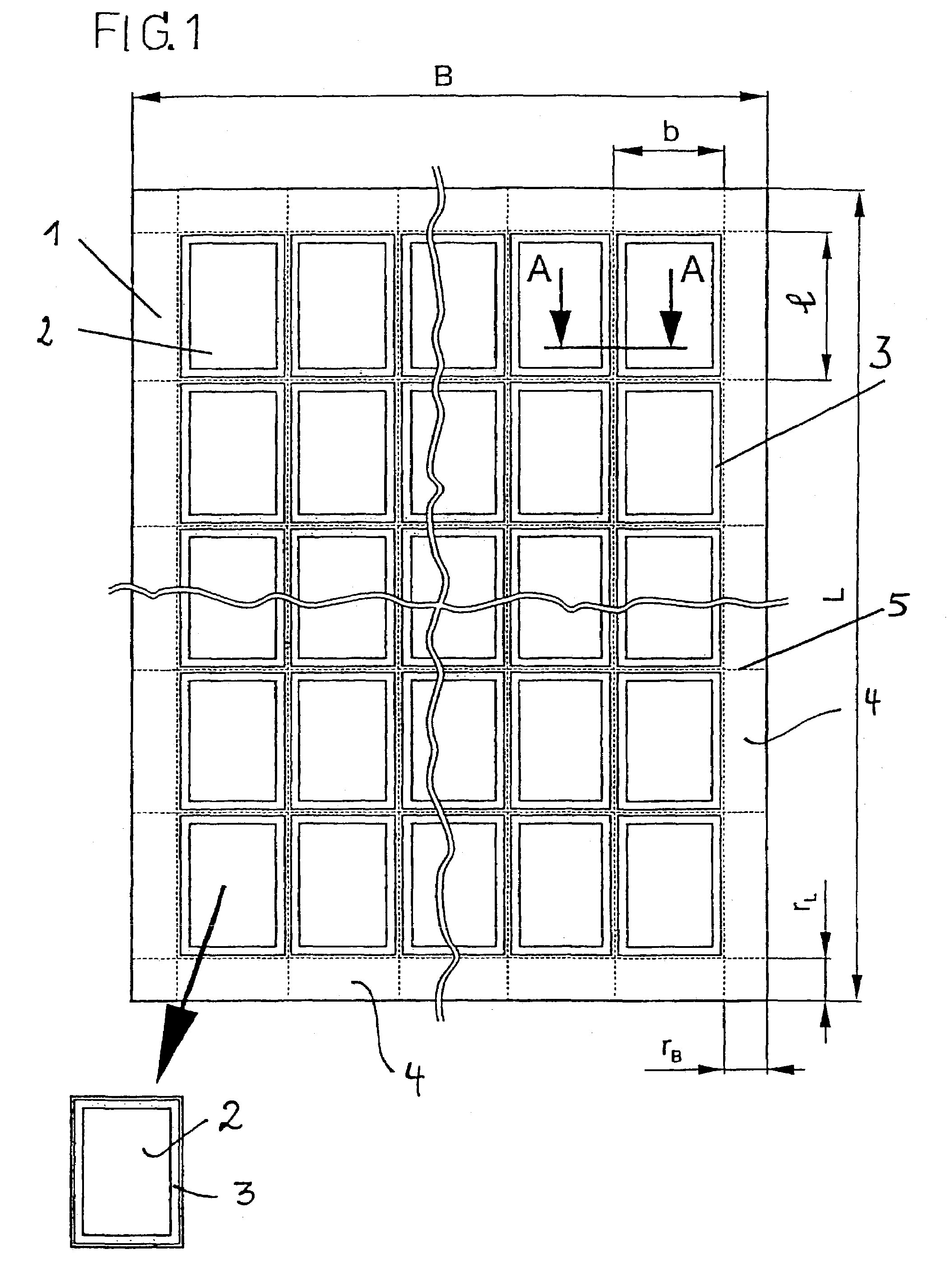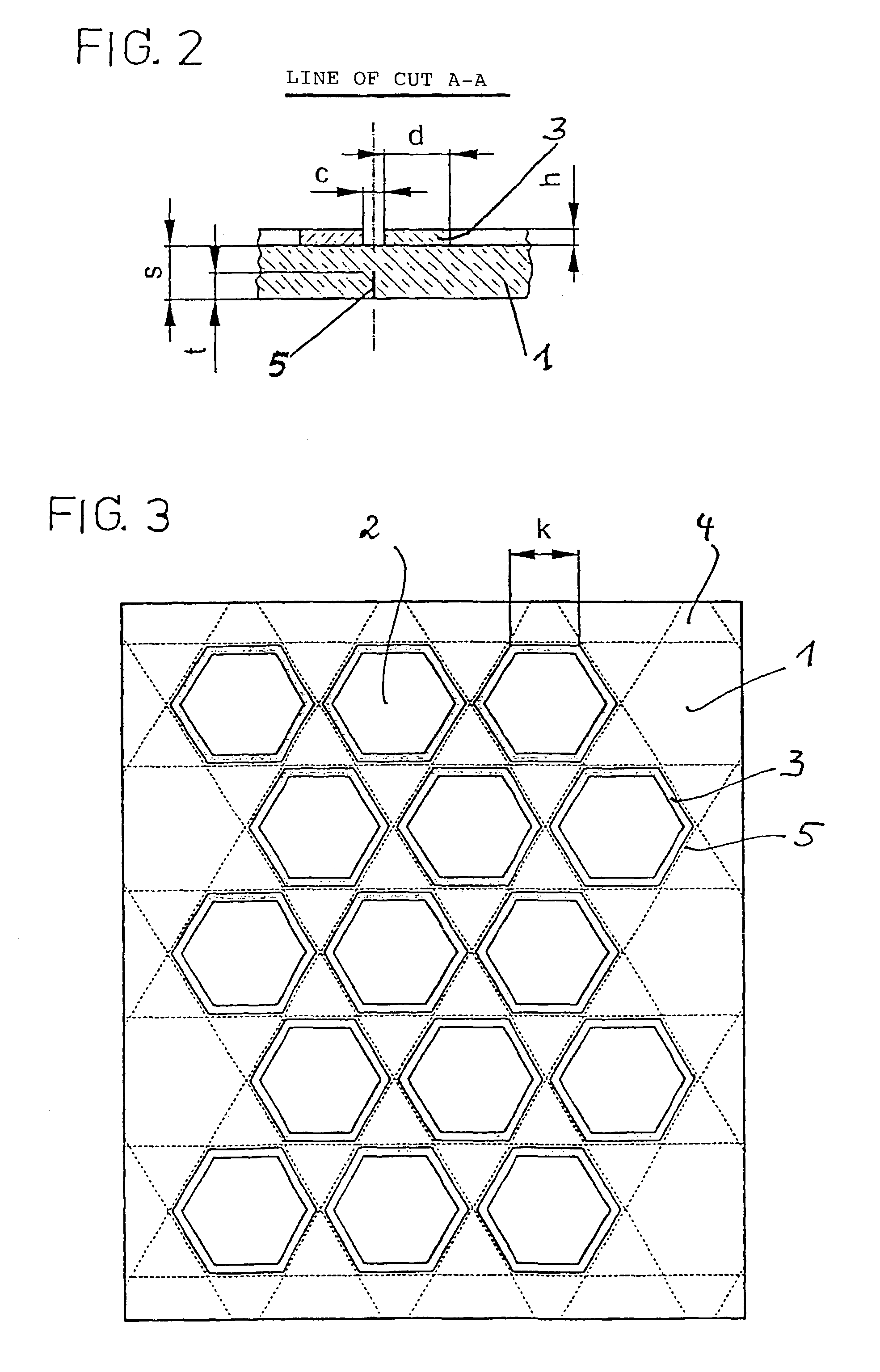Method for producing small, sheet glass plates and larger sheet glass plates as semifinished products for producing the former
a technology of glass plate and semi-finished product, which is applied in the direction of stamps, packaging, nuclear engineering, etc., can solve the problems of affecting so as to improve the quality of glass plate, and facilitate the production process.
- Summary
- Abstract
- Description
- Claims
- Application Information
AI Technical Summary
Benefits of technology
Problems solved by technology
Method used
Image
Examples
Embodiment Construction
[0029]FIG. 1, in combination with the cross-sectional drawing according to FIG. 2, shows a larger sheet glass plate 1 structured according to the invention using a rectangular geometry as an example. This sheet glass plate 1 has edge lengths B and L, which are in the range of multiple centimeters.
[0030]The aforementioned larger sheet glass plate 1 is subdiveded into smaller, likewise rectangular segments having edge lengths b and in accordance with the geometry of the smaller, sheet glass plates to be isolated, i.e., to be separated into singles, one of which is shown removed in the separated state. These edge lengths of the smaller, sheet glass plates 2 are in the range of a few millimeters. Each segment forming the respective eventually smaller, sheet glass plate 2 has a solder frame 3 made of glass solder applied in the edge region that is developed in accordance with the subsequent joining zone geometry, which is also rectangular in this example.
[0031]The solder frame structures...
PUM
| Property | Measurement | Unit |
|---|---|---|
| thickness | aaaaa | aaaaa |
| thickness | aaaaa | aaaaa |
| width | aaaaa | aaaaa |
Abstract
Description
Claims
Application Information
 Login to view more
Login to view more - R&D Engineer
- R&D Manager
- IP Professional
- Industry Leading Data Capabilities
- Powerful AI technology
- Patent DNA Extraction
Browse by: Latest US Patents, China's latest patents, Technical Efficacy Thesaurus, Application Domain, Technology Topic.
© 2024 PatSnap. All rights reserved.Legal|Privacy policy|Modern Slavery Act Transparency Statement|Sitemap



